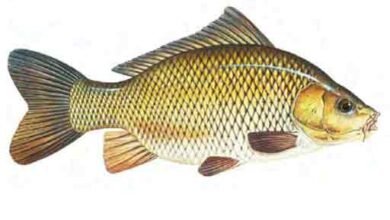Flatfish Species
Flatfish have asymmetrical, compressed bodies, swim in a horizontal position and have both eyes on top of their heads. Flatfish are bottom dwellers and begin life in coastal saltwater areas. They move to deeper water as adults, which is where most commercial fishing occurs. The skin on top of their bodies is dark, to camouflage flatfish from predators, and can sometimes change colour according to their surroundings. Flatfish have small scales and their dorsal and anal fins run the length of their bodies.
-

Common Bream
The most widely fished freshwater bream species is the common bream (also known as the bronze bream). They are found in still and slow-running waters, principally lakes, rivers, and ponds, often swimming in large shoals. Many places in Europe are famous for huge catches of shoaling bream. Bream tend to feed on insects and small crustaceans, but larger ones are known to feed on smaller fish. Not a particularly hard-fighting species, common bream are nevertheless much sought after by many anglers. The roach-bream hybrid is common in some places where…
-

Tench Tinca tinca
Tench are popular fishing bait throughout Europe and are known as dog-like warriors when hooked. They live in relatively warm ponds and lakes but can also live in slow-moving or still lower reaches of some rivers. They are known to feed hardest in the early morning, on the banks of dense vegetation such as reed beds. During the winter, tench are known to stay in the mud and not feed. Tench breed in shallow water and the larvae remain attached to the vegetation for a few days after hatching. They…
-

Black Crappie
The black crappie and its close relative the white crappie (Pomoxys annularis) are popular fish for both sport and food in parts of the United States. The black crappie is larger than the white crappie, but neither reaches the same size. These species are relatives of the black bass family and are generally found in the same types of water, such as ponds, streams, and lakes. The black crappie thrives better in slightly clearer water than the white crappie. Crappies hang out around weed beds and on mud or sand…


